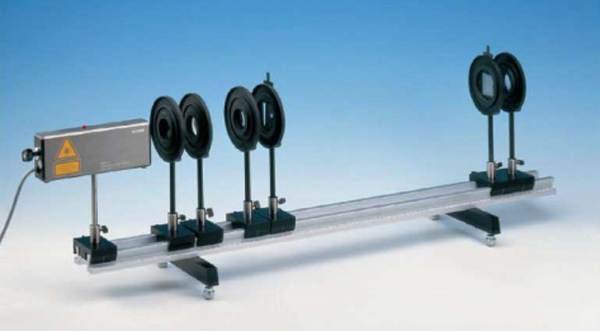Structure of a Fresnel zone plate

A zone plate is illuminated with parallel laser light. The focal points of several orders of the zone plate are projected on a ground glass screen.
- find out that optical lenses can be completely different from what you are used to
- interference is used to produce effects commonly achieved with diffraction
- the use of a laser lightsource provides clear results
Lens holder
Lens, mounted, f +20 mm
Lens, mounted, f +50 mm
Lens, mounted, f +100 mm
Lens, mounted, f -50 mm
Object holder, 5×5 cm
Ground glass screen,50x50x2 mm
Laser, He-Ne, 0.2/1.0 mW, 230 V AC
Optical bench expert, l = 1000 mm
Base for optical bench expert, adjustable
Slide mount for optical bench expert, h = 30 mm
Fresnel zone plate
Polarising filter, 50 mm x 50mm
- The laser beam must be widened so that the zone plate is well illuminated. It must be assured that the laser lightbeam runs parallel over several meters.
- The focal points of several orders of the zone plate are projected on a ground glass screen. The focal lengths to be determined are plotted against the reciprocal value of their order.
- The radii of the zone plate are calculated.
